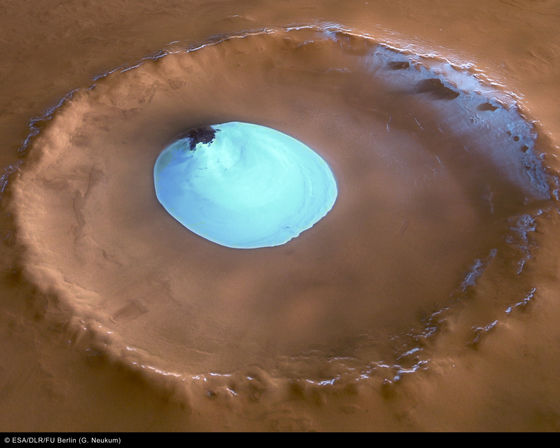It turns out that the crater of Mars is packed with 'opal' gemstones, is it the key to indicating the existence of water and life?

Analysis of data collected by NASA's Mars rover Curiosity has revealed that Martian craters are rich in opal rough. Researchers report that this opal indicates the presence of water on Mars, a finding that raises the possibility that it was once inhabited by microorganisms.
On an Extensive Late Hydrologic Event in Gale Crater as Indicated by Water‐Rich Fracture Halos - Gabriel - 2022 - Journal of Geophysical Research: Planets - Wiley Online Library
NASA's Curiosity rover discovers water-rich fracture halos in Gale Crater | ASU News
https://news.asu.edu/20221219-nasas-curiosity-rover-discovers-waterrich-fracture-halos-gale-crater
Mars crater is 'chock-full' of opal gemstones, hinting at widespread water and possible microbial life | Live Science
https://www.livescience.com/mars-opal-gemstone-crater
This time, traces of water were newly discovered in the crater, which is said to be the remains of a giant lake on Mars, by Travis S. A research team led by J. Gabriel et al.
Gabriel et al. When examining the observation records of NASA's Mars probe Curiosity, which was sent to the Gale crater of Mars in 2012, it stretched to the underground by crossing the rocky surface of the surface 'Fracturing Halo ( I noticed a band of brightly colored minerals called 'fracture halo'.

Therefore, when Gabriel et al. analyzed past data with a new method, it was found that the fractured halo found in Gale Crater is very similar in composition to a completely different rock found recently. The recently discovered rock was found to contain large amounts of silicon dioxide and water as analyzed by Curiosity's
In addition, neutron spectrometry analysis of samples collected by Curiosity at the Lubango drilling site on Mars confirmed that the fractured halo was rich in opal. The discovery of opal, which is mainly composed of silicon dioxide and water, provides new evidence that water was once abundant on Mars. It is also possible that cracks in the fragmentation halo that extend underground may have provided an escape route for Martian microbes that escaped from the harsh surface to the subsurface after the surface water dried up.
'Given the discovery of an extensive network of fissures in Gale Crater, we believe that a potentially habitable subterranean environment extended throughout Gale Crater and possibly other regions of Mars,' Gabriel said. We can predict that these environments would have formed over a long period of time after the ancient lakes in Gale Crater dried up.'

by NASA's Marshall Space Flight Center
Opal, which has been found to exist abundantly on Mars, is expected to be a lifeline for mankind who challenges Mars expansion. So far, strong evidence of ice has been found in the polar regions of Mars, but not elsewhere, such as near the equator. Opal, on the other hand, is not so strongly bound to water, so it can be crushed and heated to obtain water, and it is presumed to be widely distributed on Mars.
In the future, the research team is proceeding with future plans such as collecting opal-containing samples and manned exploration in order to better understand the past Mars, which was rich in water.
Related Posts:
in Science, Posted by log1l_ks







